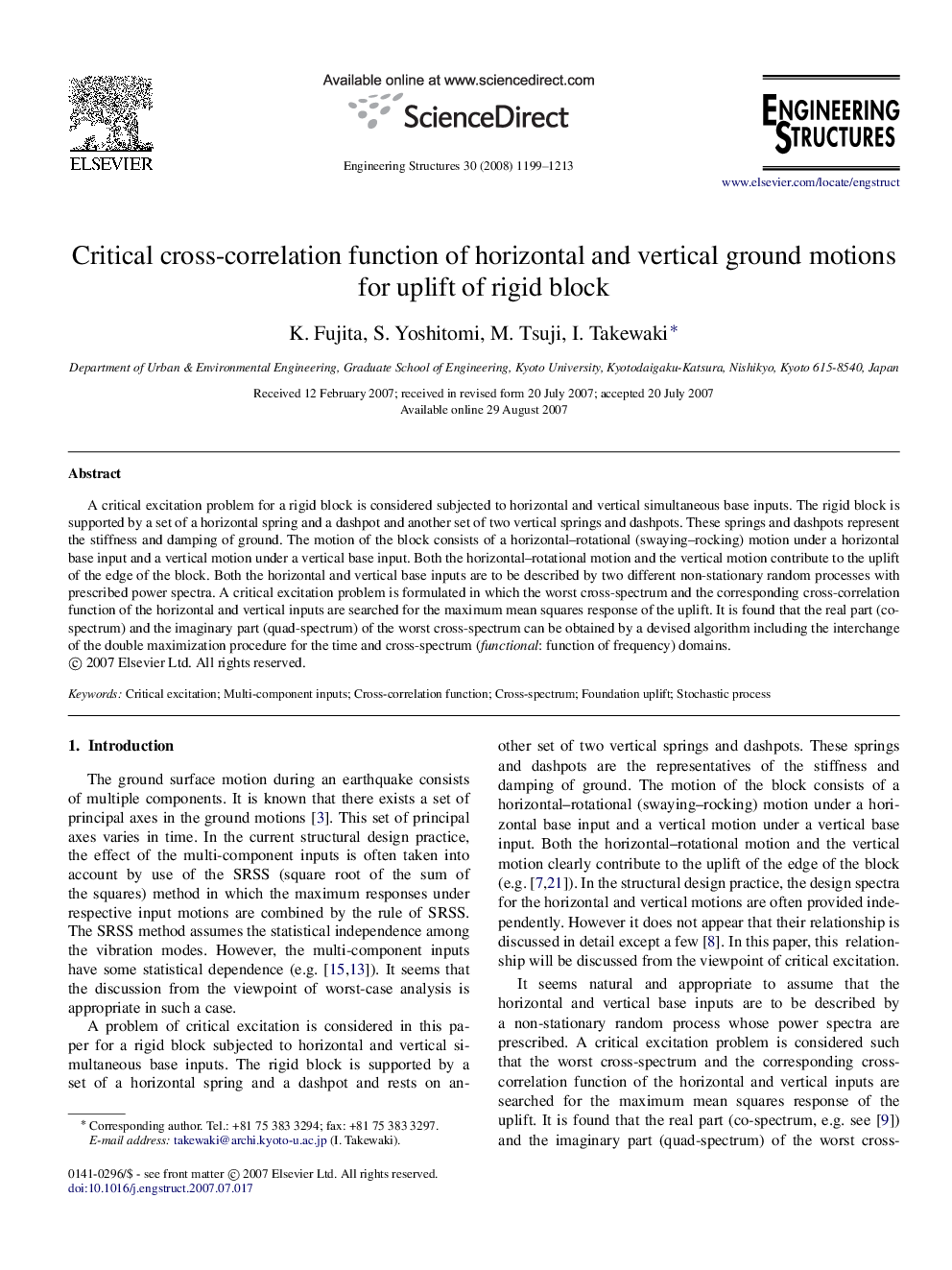| Article ID | Journal | Published Year | Pages | File Type |
|---|---|---|---|---|
| 269078 | Engineering Structures | 2008 | 15 Pages |
A critical excitation problem for a rigid block is considered subjected to horizontal and vertical simultaneous base inputs. The rigid block is supported by a set of a horizontal spring and a dashpot and another set of two vertical springs and dashpots. These springs and dashpots represent the stiffness and damping of ground. The motion of the block consists of a horizontal–rotational (swaying–rocking) motion under a horizontal base input and a vertical motion under a vertical base input. Both the horizontal–rotational motion and the vertical motion contribute to the uplift of the edge of the block. Both the horizontal and vertical base inputs are to be described by two different non-stationary random processes with prescribed power spectra. A critical excitation problem is formulated in which the worst cross-spectrum and the corresponding cross-correlation function of the horizontal and vertical inputs are searched for the maximum mean squares response of the uplift. It is found that the real part (co-spectrum) and the imaginary part (quad-spectrum) of the worst cross-spectrum can be obtained by a devised algorithm including the interchange of the double maximization procedure for the time and cross-spectrum (functional: function of frequency) domains.
